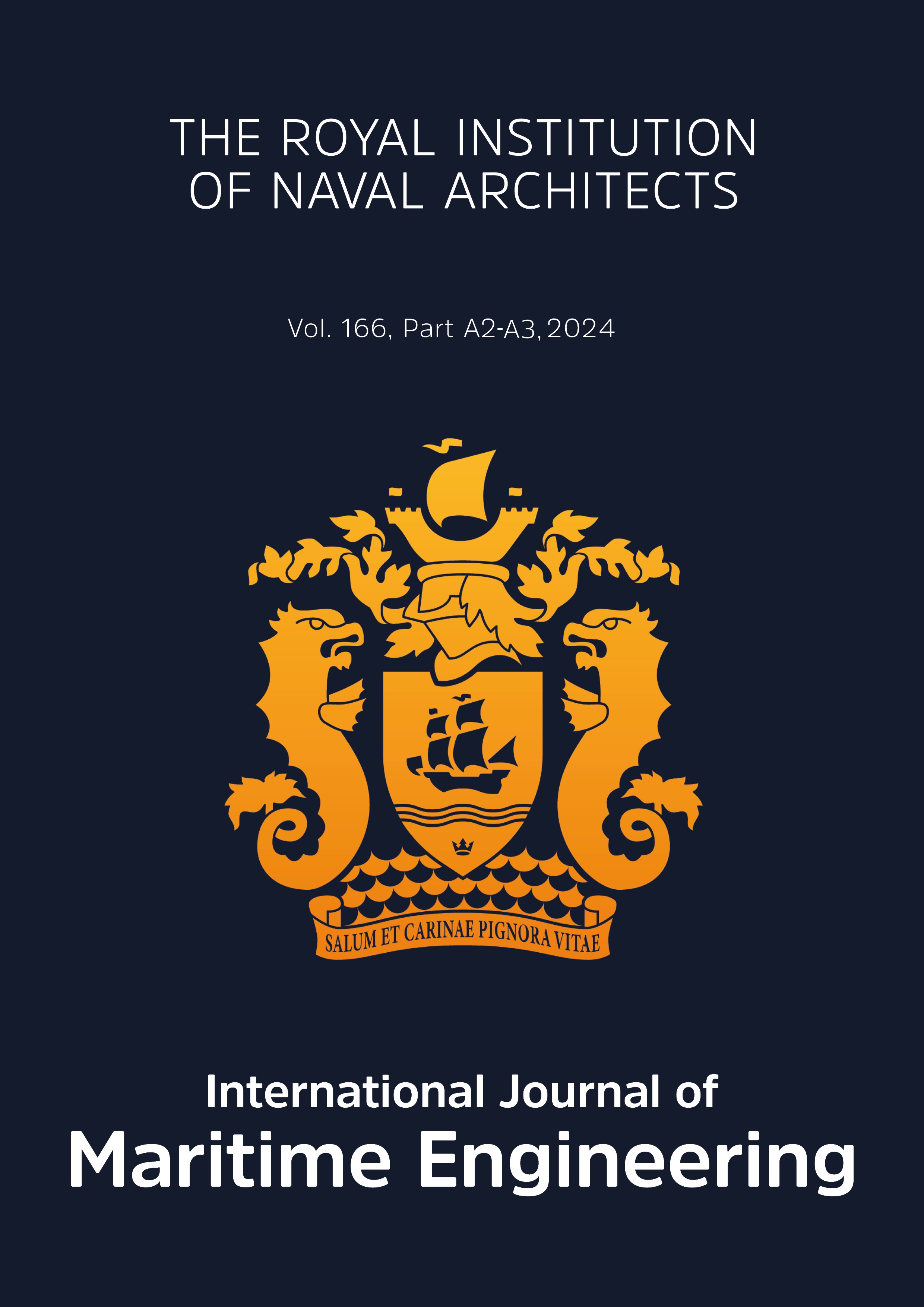Enhanced Hydrodynamics of Planing Hull Using Energy Saving Devices
Main Article Content
Abstract
In calm water conditions, the moving planing vessels in semi-planing mode release the majority of their energy from the hull to the water. Depending on the Froude number, these moving vessels produce a Kelvin wave pattern in calm water. The Volume of Fluid (VOF) approach uses the overset grid method in a RANSE-based CFD solver to track the interface between water and air. The resistance components of a planing hull were computed using the obtained results. Data from experiments are compared with the numerically simulated findings. It is seen that the resistance values predicted by the numerical simulation results are in close agreement with the experimental results for the hull equipped with the interceptor. This work aims to record the wave profile, resistance, and trim at the free surface at the transom for different beam Froude numbers. The findings are compiled for hull placed on a high-speed planing ship with a 20-degree deadrise angle, both with and without an integrated interceptor-flap. For the hull with integrated interceptor-flap, there is a reduction in drag of 19–24%, trim of 50–53%, and the free surface wave elevation of 25–40% at the transom, which contributes to the vessel’s overall performance improvement.
